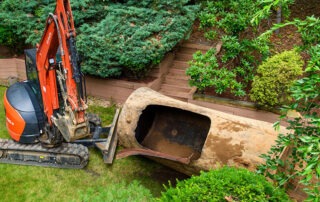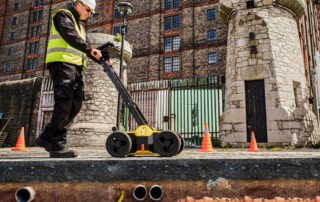
What Types of Underground Utilities Can Be Detected?
Whether you’re starting a construction project, digging on private property, or managing infrastructure assets, knowing what lies beneath the surface is crucial for safety, compliance, and efficiency. Underground utilities are often hidden just inches below the ground, and damaging them can lead to costly repairs, environmental hazards, or serious injury.
At Trace Utility, we specialize in locating a wide range of underground services using advanced technology like electromagnetic detection, ground penetrating radar (GPR), GPS mapping, and more. Here’s a breakdown of the most common types of underground utilities that can be detected:
1. Electric Power Lines
Underground electrical cables provide power to homes, businesses, and infrastructure. Accidentally striking a buried power line can be extremely dangerous and result in power outages, equipment damage, or electrocution. We use specialized locators to identify both high- and low-voltage underground power lines accurately.
2. Natural Gas and Oil Pipelines
Gas lines are one of the most critical utilities to detect due to the risk of leaks or explosions. These lines typically consist of metal or plastic piping that can carry natural gas, propane, or even petroleum products. Accurate detection is vital for both public safety and environmental protection.
3. Water Lines
Underground water mains and service lines carry potable water to buildings. They are commonly made from plastic (PVC), copper, or steel. Detecting these lines prevents costly flooding and helps protect public infrastructure during excavation or renovation.
4. Sewer and Storm Drain Systems
Sewer and stormwater pipes may be made of clay, concrete, or plastic and are usually located deeper underground. Damaging these systems can result in contamination, service disruption, or flooding. GPR and other non-invasive methods help locate these lines even when access points are limited.
5. Telecommunications and Fiber Optic Cables
Underground communication lines carry internet, telephone, and data signals. These cables are delicate and often not metallic, making them harder to detect. Striking a fiber optic line can disrupt service for entire neighborhoods or business complexes. Trace Utility uses precise detection tools to locate these fragile systems with accuracy.
6. Irrigation and Sprinkler Lines
In residential, commercial, and agricultural settings, underground sprinkler and irrigation systems need to be marked before digging. These lines are usually plastic and often go undetected without proper scanning equipment.
7. Private Utility Lines
Many properties—especially commercial or industrial sites—have private utilities that don’t show up on city records. These may include:
- Private electrical feeds
- Data or security lines
- Secondary water or gas services
- Heating system lines
Trace Utility specializes in detecting unrecorded and private utility lines to ensure full coverage before any ground disturbance.
Why Utility Detection Matters
Failing to locate underground utilities before digging can lead to:
- Service interruptions
- Expensive repair costs
- Project delays
- Fines or legal consequences
- Serious injury or death
That’s why utility detection is not just a smart choice—it’s often a legal requirement.











